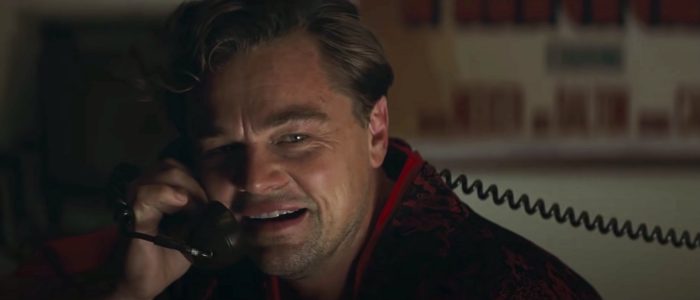
Quentin Tarantino is now a novelist. Since the beginning of his career, his films have employed a novelistic structure, but now he’s writing actual books, the first of which adapts his last movie, Once Upon a Time in Hollywood, for the page. Usually, it’s the other way around and we’re talking about the leap from page to screen. For whatever reason, movie novelizations have never been afforded artistic respect like film adaptations even though they fulfill a comparable task by translating a story to a different medium.
Now, we’ve got the quintessential filmmaker of the 1990s easing us further into the 2020s with a literary return to the 1960s. Once Upon a Time in Hollywood: A Novel, published straight to mass-market paperback by Harper Perennial, is a prose version of the hangout movie Tarantino delivered to audiences in packed theaters two summers ago. The world has changed and so has this narrative, but the voice recounting it remains the same old Tarantino, for better or for worse or for Valhalla. Even the dedications stir controversy: along with his wife and son and other “actor Old Timers,” there’s the name Robert Blake.
In the audiobook, provided by HarperAudio and narrated by Jennifer Jason Leigh, the author’s voice just happens to speak through the mouth of the actress who portrayed Daisy Domergue in The Hateful Eight.
This post contains spoilers for Once Upon a Time in Hollywood: A Novel. If you don’t want to know how the book differs from the movie, feel free to hit the off-ramp now as we cruise along the freeway in our Cadillac Coupe de Ville.
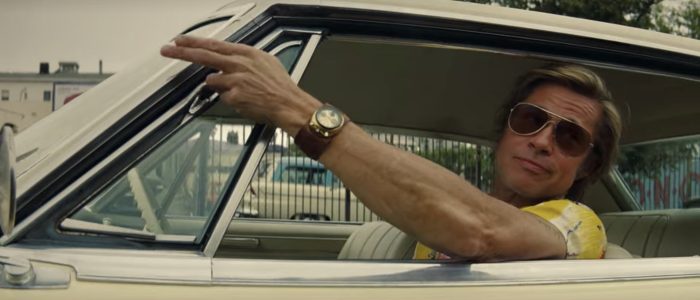
Once Upon a Time in Hollywood: A Novel is a Revenge Trip
Tarantino loves the cold Klingon dish of revenge and Once Upon a Time in Hollywood: A Novel feels like revenge travel to his favorite alt-history realm. Here be dragons? Well, yes, if Charles Manson could be considered a red dragon à la Francis Dolarhyde. Welcome back to the Tarantino-verse, where colonialist mixed metaphors (“the jungle drums of her tom-tom-ing heartbeat”) and references to any and every movie under the zero one sun, as fellow Californicator Anthony Kiedis would call it, are fair game.
Think of it as a theme park, Banksy’s Dismaland instead of Disneyland. The last time I made that comparison, we were celebrating Pulp Fiction on its 25th birthday. Once Upon a Time in Hollywood hit Blu-ray a month later. Zeroville door, open now.
The Tarantino-verse has expanded or maybe it was always this big and our minds were just too small to fathom its canyons (Benedict being the name of the most famous one). It’s like we made one visit to this place before, but didn’t have time, even in 161 minutes, to take in all the attractions on the map. So now, Tarantino the tram operator is taking us back, but we’re going to have a different experience, trying out new rides and finding fresh pockets of life in other corners of the park.
There’s a wealth of new material in the book, much of which isn’t particularly vital to the plot, but which adds to the Magnolia-like mosaic of L.A. life. In the film, cinematographer Robert Richardson captured some of that life with the floating, godlike perspective of his crane shots. Once Upon a Time in Hollywood: A Novel can only rely on Tarantino’s pure-grain words and the reader’s memory of the movie.
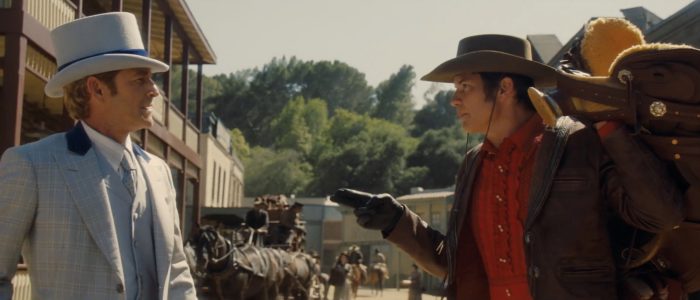
Jennifer Jason Leigh Performs the Audiobook
For all its flaws, Once Upon a Time in Hollywood still ranked high on /Film’s list of the best movies of the 2010s and it remains an important emblem of the kind of filmmaking that has been all but lost in the sea change from cinemas to streaming services. Rick Dalton’s mid-life crisis leads to a fairytale ending where he’s welcomed into the gates of Hollywood heaven (or at least his angelic neighbor’s Hollywood Hills estate). And although Tarantino has said that his tenth and final film will be “epilogue-y,” he himself seems to be gearing up for a second act already with Once Upon a Time in Hollywood: A Novel.
Oddly enough, it’s the book that feels epilogue-y in a way, like one long footnote to the movie — or one long voiceover. Kurt Russell no longer interjects sudden narration as he did in the film, but if you’re listening to the audiobook, you’ll hear the above-mentioned Leigh, the same voice who taunted Russell’s hangman in The Hateful Eight, reading the story.
Sniffy Audible.com reviews cite Leigh as “monotone” and a victim of “vocal fry” whereby the voice becomes croaky. Evil sexy Hamlet would say the one-star reviews of her performance doth protest too much.
Admittedly, there were times as a listener when I found my attention drifting, only to tune back in and have difficulty distinguishing who was talking because Leigh only seemed to be subtly modulating her voice between characters. I eventually pivoted to reading the e-book because it was faster and also more convenient for reference thanks to the wonders of Command+F.
Once Upon a Time in Hollywood: A Novel doubles down on the day-in-the-life conceit of Tarantino’s film. It even has “A Day in the Life” by The Beatles playing on the car stereo at one point, because, hey, no need to pay for song licensing in this medium when you’re just name-dropping a title. In the absence of Oscar-winner Barbara Ling, the reader effectively becomes production designer, building the story in his or her head according to Tarantino’s design specifications.
Case in point: instead of hippie girls singing and dumpster-diving, our first glimpse of anything Manson-related comes when the novel cuts across town from Cliff’s trailer to Spahn Ranch, where George and Squeaky Fromme (Bruce Dern and Dakota Fanning’s characters) are watching the same episode of Mannix on TV.
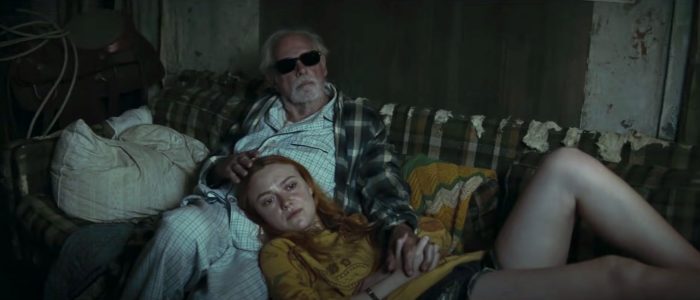
The Reader or Listener Enters as Co-Pilot
At first, Tarantino’s debut novel is more focused on dialogue and actions that occur in external reality, as a regular old screenplay would be. When the book does begin offering a window into Rick and other characters’ thoughts, they’re almost uniformly ugly, peppered with the fa-word and similar non-PC vitriol. In time, something resembling a legit novel does take shape but it’s slippery and protean and not wedded to what the movie showed.
Remember the pool party at the Playboy Mansion? The first mention of it here comes in passing the morning after as Roman Polanski (the Tarantino caricature, not the real-life filmmaker and fugitive from justice) stews in his backyard about American chili burgers and “that a**hole Steve McQueen.” Tarantino’s prose — the ability of literature, in general, to showcase a character’s inner life in ways cinema can’t — enables us to “enter [Roman’s] soul to co-pilot” him, much like Charlie does with the youngest Manson girl, Pussycat (Margaret Qualley’s character in the film, who takes on new life as a pantsless car passenger and naked trespasser, braving the initiation rite of a “kreepy krawl” into a sleeping elderly couple’s bedroom).
In Roman’s mind, the mansion visit is something that took place “last night,” not offscreen but definitely off-page. The novel skips over the poolside scene with Damian Lewis in his McQueen sideburns. Been there, done that. Overall, it hits enough of the same beats, though certain locations are different. Instead of Hollywood’s oldest restaurant, Musso & Frank Grill, the first long chapter unfolds in an office at the William Morris Agency.
Absent Leonardo DiCaprio’s presence, the struggling actor Rick doesn’t make much of a first impression. Instead of cutting to Rick’s Nazi barbeque in The 14 Fists of McCluskey and other career highlights, we just sit in the office with him as his agent, Marvin Schwarz (Al Pacino’s character), does most of the talking. Later, when Rick meets 8-year-old actress Trudi Fraser, their sweet, vulnerable interactions in the movie are undermined by such musings as, “F**k this f**king little c**t.”
Chalk it up to Rick being “undiagnosed bipolar.” Tarantino the filmmaker was content to hint at this, showing without telling. “We never say the words,” he said while promoting his 2019 film. Tarantino the novelist states outright that Rick self-medicates with alcohol. Details like this flesh out the film without deepening it since it loses ambiguity.
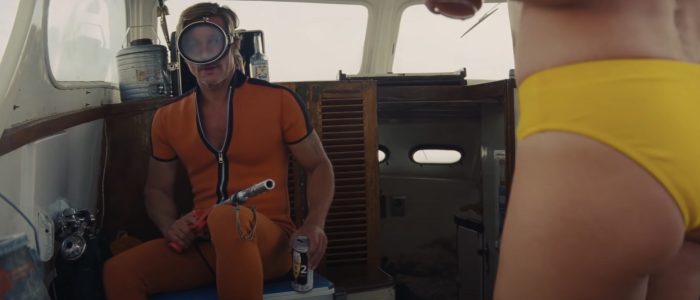
Cliff Booth: You Might Not Dig Him
Speaking of unambiguous, there’s also the case of Cliff Booth (Brad Pitt, because who else are you going to imagine while reading). When we first meet the blacklisted stuntman, he’s sitting in the waiting room outside Marvin’s office, where he leafs through Life magazine and soon invites the “pigtailed young” secretary on a Travis Bickle-esque date to an erotic film.
In the movie, Randy Lloyd, the stunt coordinator played by Russell, described Cliff as “creepy” and sucked the air out of Rick’s trailer with the verdict of, “I don’t dig him.” In the book, Cliff deserves that and is creepier still. He has a seedy past as a French pimp’s protégé and in the present, he revels in the “consciously racist, misogynistic” qualities of secret-agent men.
We learn more about his sexual proclivities and everyone else’s, as Tarantino goes into detail about the ministrations of Squeaky and turns Beach Boy Dennis Wilson into a statutory rapist who isn’t above bedding the same 15-year-old as Terry Melcher. Pussycat supplants the real-life Manson girl, Ruth Ann Morehouse.
Too much information? Indubitably. Digressions? There are many. Does a dog die? Yes. Instead of dwelling on familiar moments, Tarantino prefers to slip between the cracks of what the viewer recalls. He’s no stranger to nonlinear storytelling, but Once Upon a Time in Hollywood: A Novel flashes both forward and back and the chronology occasionally gets confusing.
Even the movie’s ending, a retcon that regurgitates the wish-fulfillment Nazi assassinations in Inglourious Basterds, gets reduced to a bit of backstory. We learn how “the hippie flamethrower incident raised Dalton’s profile,” enabling him to guest-star on Mission: Impossible and appear on The Tonight Show Starring Johnny Carson all “throughout the seventies.” Note that this takes us past Manson’s summer of ’69 reign of terror into some uncharted territory.
When Manson himself rolls up on Cielo Drive in his Twinkie truck, his mindset is that of a failed singer-songwriter desperate for a recording contract. The official book trailer, which includes footage not seen in the movie, tells us “he’d trade it all in to be a rock ‘n’ roll star” It makes you wonder if Tarantino’s original plan for an Inglourious Basterds mini-series didn’t involve some subplot about Hitler as a frustrated painter like in the movie Max.
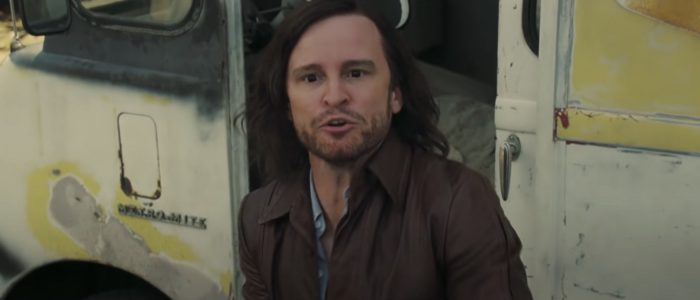
Here Be Dogs and Dudes and They Be Killers
Frankly, it’s not surprising that Tarantino is working on a book of film criticism next because he’s already wedged plenty of that into his novel. As a World War II hero who’s seen violence and blood and spilled buckets of it (Lieutenant Aldo Raine, is that you?), Cliff finds Hollywood films juvenile and unrealistic. He much prefers foreign films, especially the kind starring Toshiro Mifune. Similar to Sharon Tate, who expounds at length on all her musical preferences (she likes the Monkees better than the Beatles, etc.), Cliff’s headspace is that of a movie encyclopedia. It’s full of extraneous information that a writer-director might use to build an offscreen character profile.
“[Foreign films] didn’t care if you liked the lead characters or not. And Cliff found that intriguing.” Let the reader understand that they are probably mainlining Tarantino’s own thinly disguised thoughts. Cliff reacts against François Truffaut’s autobiographical pretensions in The 400 Blows yet this novel and its opinions, voiced by various Tarantino mouthpieces, might have the same effect on some readers, namely people who aren’t keen to hear Quentin tossing around the n-word like it’s 1994 still and he’s back in his bathrobe as Jimmie in “The Bonnie Situation.”
Once Upon a Time in Hollywood: A Novel is unlikely to win over any of Tarantino’s critics but then again, anyone who reads it is probably at least a fan (if not an unquestioning devotee or acolyte, who would be too caught up in the cult of personality, rather like Mansonites, to grapple with the author’s peccadillos, as I am doing here). Never mind. In the movie, it was Cliff, not Quentin, who fed his pit bull, Brandy, raccoon-flavored dog food. Wolf’s Tooth: “Good Food for Mean Dogs.”
The book delves more into Brandy’s past on the dogfight circuit and it makes her owner far less affable. By the way, Cliff did murder his wife and she’s not the only peacetime civilian he’s killed. He also went homicidal on Brandy’s erstwhile owner, Buster, who owed him $3,200 and who wanted to sacrifice Brandy to a losing deathmatch where he would bet on the other dog.
“Wanna know what it feels like [to kill someone]?” Cliff asks Rick. “Kill a pig.” Are we meant to believe there’s another alternate history where Cliff’s the one who scrawled “pig” in blood on the door of the Tate house?
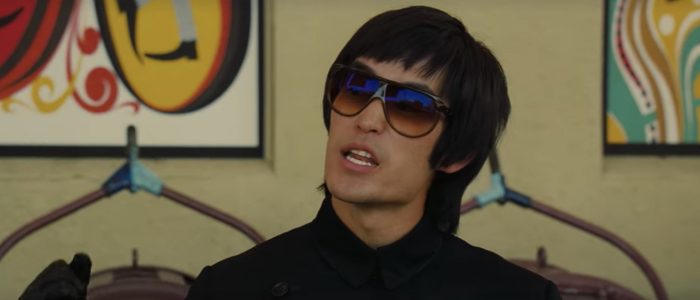
“Ain’t No F***ing Ballpark” Can Hold QT (or His Ego)
Cliff isn’t the only killer in focus in Once Upon a Time in Hollywood: A Novel. Johnny Madrid (Timothy Olyphant’s TV character, who is secretly a Lancer, the brother of Luke Perry’s character) slays the rich man who murdered his mother and slays all twelve members of the jury that acquitted said man. However, we’re told that Cliff killed more Japanese soldiers than any other American in the war, and his equally hyperbolic (not to mention dubious) reputation as “the only known white man to ever win a fistfight with Jim Brown” precedes him.
That brings us to Bruce Lee. In the book, before Cliff meets Lee on the set of The Green Hornet, he already has a history as a “ringer,” a day player brought in to teach actors like Robert Conrad a lesson for “tagging,” or accidentally hitting someone for real during a fight scene. He and Lee are still evenly matched, but if there’s anything Tarantino’s book publicity rounds have taught us, it’s that he’s still prone to peacocking all over Lee’s grave and then rebuffing any criticism about it. “Does Quentin Tarantino hate Bruce Lee?” asks Lee’s daughter, Shannon, in a THR guest column. “Or does it just help sell books?”
These are the provocations of a cinematic shock jock. In the movie, when Sharon Tate and Pussycat kick up their dirty feet in the viewer’s face, it does feel like this is Tarantino, the infamous foot fetishist, showing that he’s self-aware yet unapologetic. “With Polanski,” his book tells us, “audience disturbance was the point.” Suspicion arises that Polanski’s name, itself a lightning rod for controversy, is just a placeholder for Tarantino’s. Which generation is it, the ‘60s or the ‘90s, and is it Roman or is it Quentin he’s thinking of when he writes of “the first genuine rock-star movie director?”
For the moment, at least, QT the rocker has left his home stadium and is out in the wild where, alas, there’s no church of the Cinerama Dome anymore, just a bunch of streaming content. Crossing over into the book world is a lateral move. What’s interesting is that Once Upon a Time in Hollywood: A Novel exposes precisely which parts of Tarantino’s baggy yet buoyant film could have been left on the cutting-room floor. It does so by pulling apart the patchwork quilt and sewing some pieces back together with other new pieces: darlings that he killed or that came to life after-the-fact.
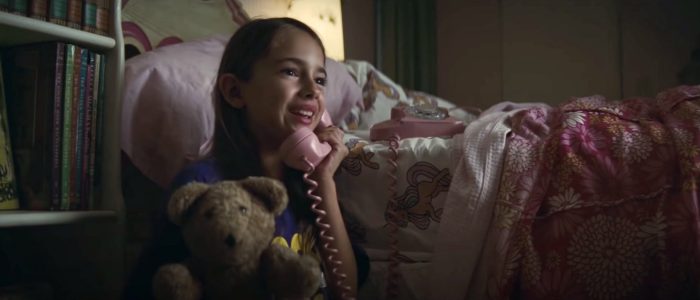
This Is Once Upon a Time in the Tarantino-verse
It’s strange to see Tarantino, a screenwriter known for his tension-filled dialogue, have his characters indulge in mundane greetings like:
“Hey, Curt, how ya doin’?”
“Just fine, Jim, how’s it goin’ with you?”
Whatever happened to entering a scene as late as possible and leaving it ASAP? If, as Hitchcock said, “Drama is life with the dull parts cut out,” that’s where Once Upon a Time in Hollywood: A Novel tends to flounder. It’s dramatically inert in ways most Tarantino films aren’t. He takes us into the Drinker’s Hall of Fame and expends whole paragraphs and indeed pages laundry-listing the posters and celebrity photos on the wall, telling us which are signed or unsigned, before laundry-listing all the beer brands it sells and then dropping a plethora of names and movie titles as the boys talk shop in a boring bar conversation.
To the uninitiated, some of it might be as esoteric as reading genealogies in the Bible. Like M. Night Shyamalan, Tarantino still can’t resist the urge to insert himself as an actor into his own stories, either. That’s right: Quentin and his stepdad, the aforesaid Curt, exist in-universe here. Curt plays piano in the bar and Rick signs an autograph for young Quentin on a cocktail napkin. When Quentin grows up, the book tells us he will direct Trudi in an Oscar-nominated remake of The Lady in Red.
It adds a personal touch, but by the end, the novelty has worn off. The Manson Family disappears and the story instead concludes with a Steve McQueen reunion and Rick on the phone with Trudi, rehearsing his character Caleb’s death scene. Tarantino’s approach is so freewheeling that, at times, his book reads more like a junk-drawer assembly of tangents than a cohesive, well-plotted narrative.
Ultimately, Once Upon a Time in Hollywood: A Novel works best as a piece of supplementary material that plays on Tarantino’s love of movie novelizations — without necessarily heralding some late-career reinvention for him as the next Elmore Leonard. Quite possibly, its aspirations are no grander than that, anyway. Whatever the case, the experience of it is like hitting “Play all” on a menu of deleted and extended scenes. There are still pleasures to be had in this corner of the Tarantino-verse, but the book’s redeeming qualities aren’t always enough to counter-balance its problematic parts.
The post Quentin Tarantino’s ‘Once Upon a Time in Hollywood’ Novel is a Fascinating, Frustrating Display of the Filmmaker’s Strengths and Weaknesses appeared first on /Film.
0 Comments